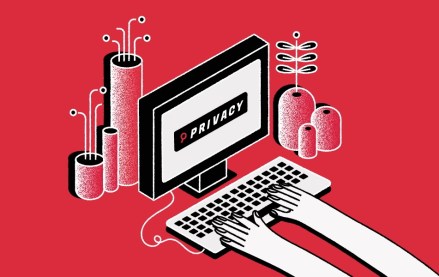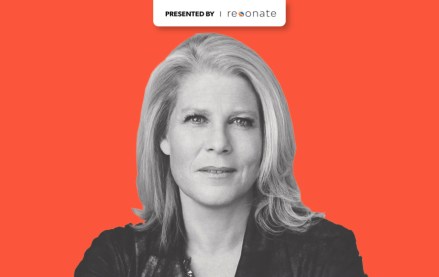
Brands are desperate to know their consumers, but some enduring misconceptions about personal data and online privacy are preventing their efforts from being as effective (or extensive) as they could be. Concerns about “big brother” in our increasingly digital world make it even more difficult. Fortunately, the reality isn’t nearly as paranoia-inducing.
Here are some common rumors about data and its uses that are making brands sweat, but like most urban legends they’re just not true. Don’t let them keep you from making the most of your data.
Big Brother is watching
Brands are convinced that consumers see personal data collection and analysis as an unsettling, Orwellian invasion of privacy.
“It’s patently untrue,” said Jon Gibs, vp of analytics at Huge. “The trend over the past ten years has been users providing more and more data, either through reward programs or social media. The perception has to do with the fact that more and more users are blocking cookie data, when in fact cookie data is probably one of the least accurate types of data that exist.”
Consumers will share their identifying information with a brand if they’re rewarded with a personalized experience. “As services like Facebook and LinkedIn continue to be used by hundreds of millions of people, they’re getting used to it,” said Chris Kief, CTO at Saatchi & Saatchi. “I don’t even know if the benefit needs to be that large anymore. The barrier’s going down as people get more comfortable.”
Size matters
As the adage goes, it’s how you use it that matters. In the digital age, marketers can collect unprecedented amounts of data, but it’s important to remember:
- Bigger data isn’t necessarily better data.
- Quality always trumps quantity
- Accuracy is the key to constructing useful consumer profiles.
“The more data you have, the easier it is to gloss over slight irregularities,” said Gibs. “More data does cure many ills in terms of accuracy. But it doesn’t solve more problems, it just solves one or two individual problems better.”
And from the start, data collection should always be strategic. “You have to be targeted in what questions you’re trying to answer rather than just going and collecting a bunch of data,” said Kief. “Knowing up-front what you’re trying to do is the biggest thing.”
Location is obsolete
Did you know that 80 percent of local product searches culminate in a purchase at a physical location? With so many transactions taking place in the digital world, it’s easy to forget ye olde brick and mortar. But just because you’ve identified your consumers online doesn’t mean they’re going to convert online.
Marketers need to take their heads out of the cloud and look around them. “The iPhone came out and location came raging back,” said Kief. “From a marketer’s standpoint, it goes a long way with personalization. Recently, Walmart was tracking weather data to inform the product mix based on that data.”
Old media is the new wasteland for B2C
Each wave of technology brings the same proclamation: Old media is dead; long live new media. But the numbers don’t lie: While 76 percent of Americans have some level of Internet access and 52 percent wield smartphones, an overwhelming 96 percent watch TV, 91 percent read magazines and 82 percent listen to the radio.
“Old media is still in many cases the most efficient way to drive reach,” said Gibs. “And digital is having trouble with brand-building, because it’s still hard to tell a brand’s story in display units or in social. It’s much easier to tell it on a large glossy page or a 30-second spot.”
Cross-channel integration will be the new imperative to identify consumers consistently across devices and touchpoints. “As people move to services like FiOS, there will be more data available,” said Kief. “There’s going to be a lot of experimentation and interesting things that happen in that space.”
Mobile is the marketer’s white knight
Remember this fact: 83 percent of consumers expect brands to know them across all touchpoints. While mobile budgets are increasing at a breakneck pace, the risk of myopia in the face of the newest tech fetish is real. Brands must accept that any channel’s strength can also be assessed by its ability to integrate with cross-channel campaigns.
But the enthusiasm isn’t unfounded. “While everyone’s hyping mobile as the only thing they should be worrying about, it’s definitely something they should be leading with,” said Kief. However, he added, “Like anything, we have to stay open and be willing to shift as trends develop.”
Like most urban legends, there is always a kernel of truth. Whether you’re talking about consumer privacy or the industry’s newest shiny object (a particular campaign or channel), marketers have to be more discerning than ever to cut through the hype and keep the customer experience front and center.
More from Digiday

With a new ‘answer engine,’ Brave browser adds another generative AI tool for search
The privacy focused browser’s new tool is the latest to offer a synthesized summary for queries using its independent index.

NBA CMO Henault: How the league added music and fashion to its bench strength
Tammy Henault, CMO of the NBA, shared some of the strategies that helped the association stand out from other pro sports leagues.

‘Beginning to be the practical’: GE global CMO Linda Boff on the evolution of AI in marketing
Boff pointed to market research as an area where AI is beginning to have an impact, in a good way, on an industry feature that has lingered in the traditional.





